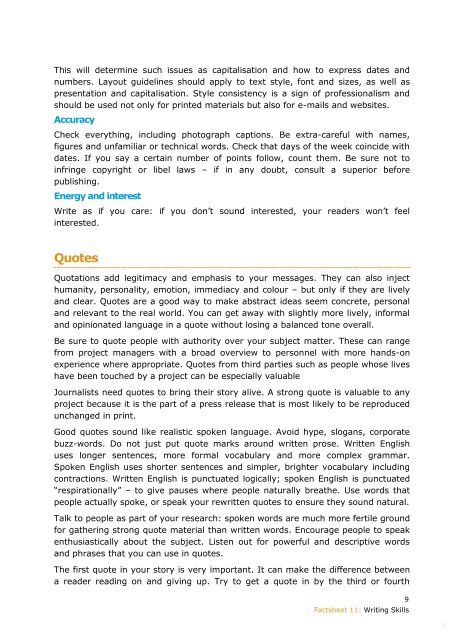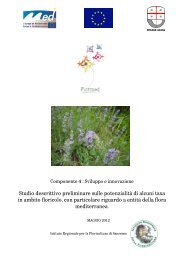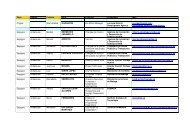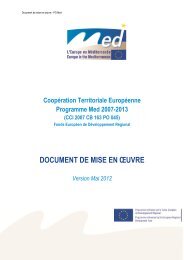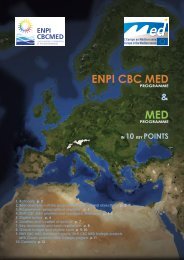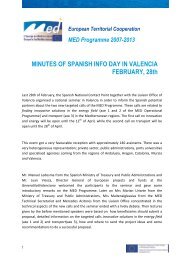MED Communication Handbook - Programme Med
MED Communication Handbook - Programme Med
MED Communication Handbook - Programme Med
You also want an ePaper? Increase the reach of your titles
YUMPU automatically turns print PDFs into web optimized ePapers that Google loves.
This will determine such issues as capitalisation and how to express dates and<br />
numbers. Layout guidelines should apply to text style, font and sizes, as well as<br />
presentation and capitalisation. Style consistency is a sign of professionalism and<br />
should be used not only for printed materials but also for e-mails and websites.<br />
Accuracy<br />
Check everything, including photograph captions. Be extra-careful with names,<br />
figures and unfamiliar or technical words. Check that days of the week coincide with<br />
dates. If you say a certain number of points follow, count them. Be sure not to<br />
infringe copyright or libel laws – if in any doubt, consult a superior before<br />
publishing.<br />
Energy and interest<br />
Write as if you care: if you don’t sound interested, your readers won’t feel<br />
interested.<br />
Quotes<br />
Quotations add legitimacy and emphasis to your messages. They can also inject<br />
humanity, personality, emotion, immediacy and colour – but only if they are lively<br />
and clear. Quotes are a good way to make abstract ideas seem concrete, personal<br />
and relevant to the real world. You can get away with slightly more lively, informal<br />
and opinionated language in a quote without losing a balanced tone overall.<br />
Be sure to quote people with authority over your subject matter. These can range<br />
from project managers with a broad overview to personnel with more hands-on<br />
experience where appropriate. Quotes from third parties such as people whose lives<br />
have been touched by a project can be especially valuable<br />
Journalists need quotes to bring their story alive. A strong quote is valuable to any<br />
project because it is the part of a press release that is most likely to be reproduced<br />
unchanged in print.<br />
Good quotes sound like realistic spoken language. Avoid hype, slogans, corporate<br />
buzz-words. Do not just put quote marks around written prose. Written English<br />
uses longer sentences, more formal vocabulary and more complex grammar.<br />
Spoken English uses shorter sentences and simpler, brighter vocabulary including<br />
contractions. Written English is punctuated logically; spoken English is punctuated<br />
“respirationally” – to give pauses where people naturally breathe. Use words that<br />
people actually spoke, or speak your rewritten quotes to ensure they sound natural.<br />
Talk to people as part of your research: spoken words are much more fertile ground<br />
for gathering strong quote material than written words. Encourage people to speak<br />
enthusiastically about the subject. Listen out for powerful and descriptive words<br />
and phrases that you can use in quotes.<br />
The first quote in your story is very important. It can make the difference between<br />
a reader reading on and giving up. Try to get a quote in by the third or fourth<br />
9<br />
� Factsheet 11: Writing Skills<br />
�


